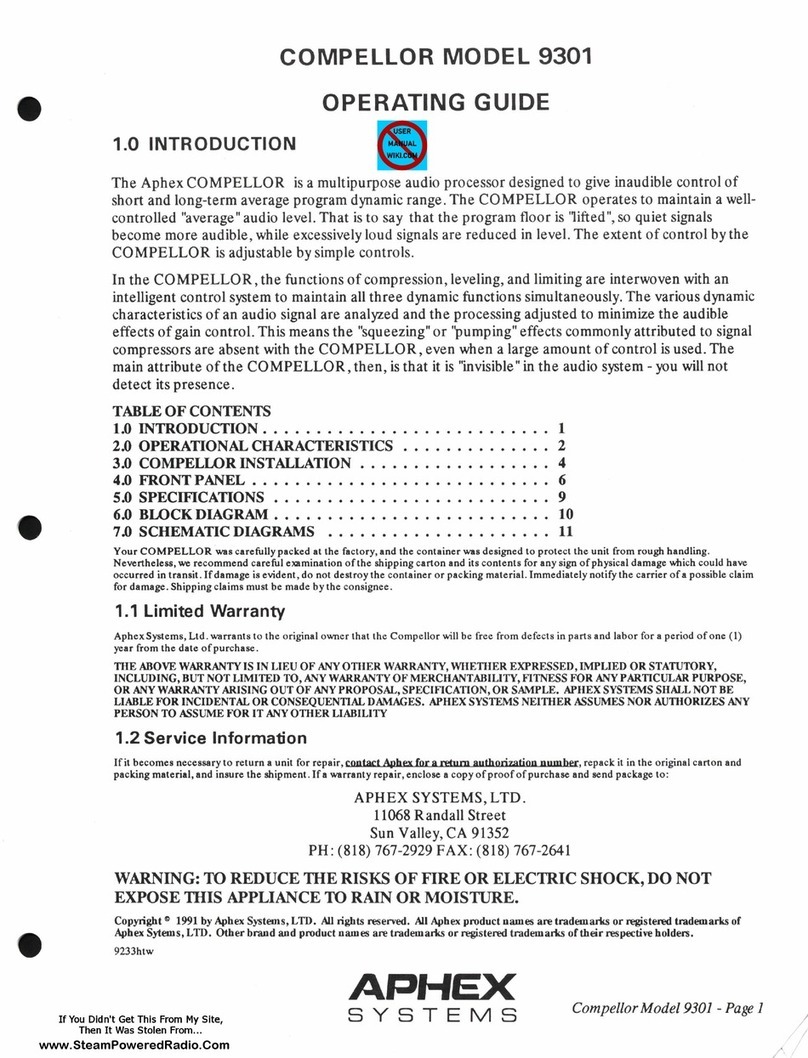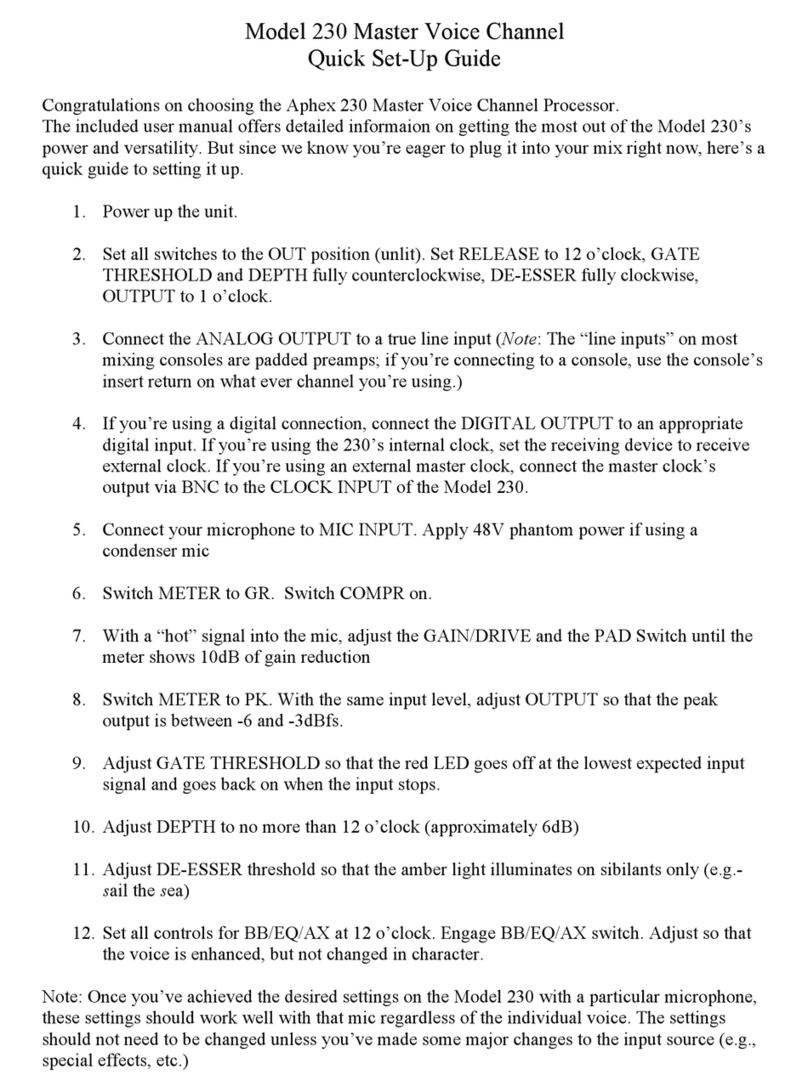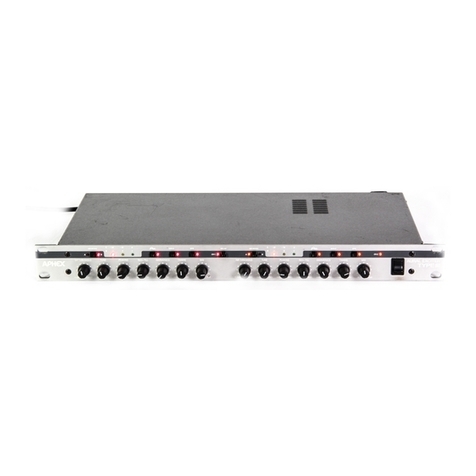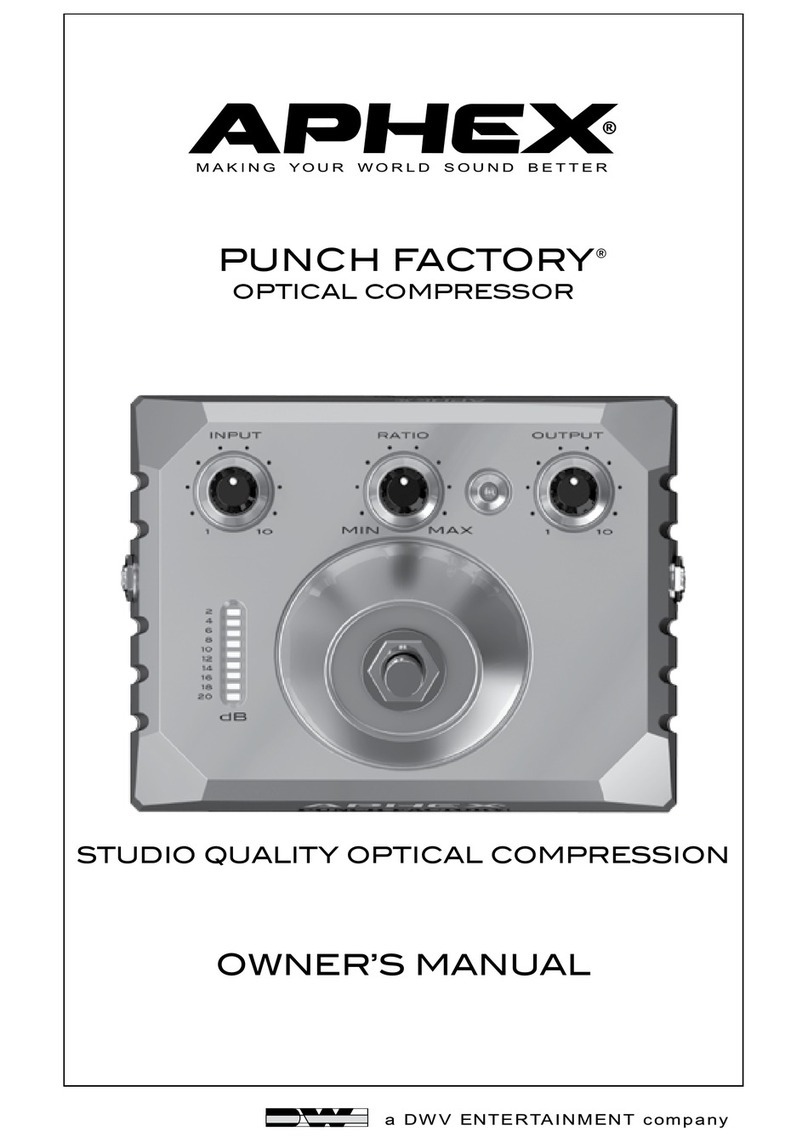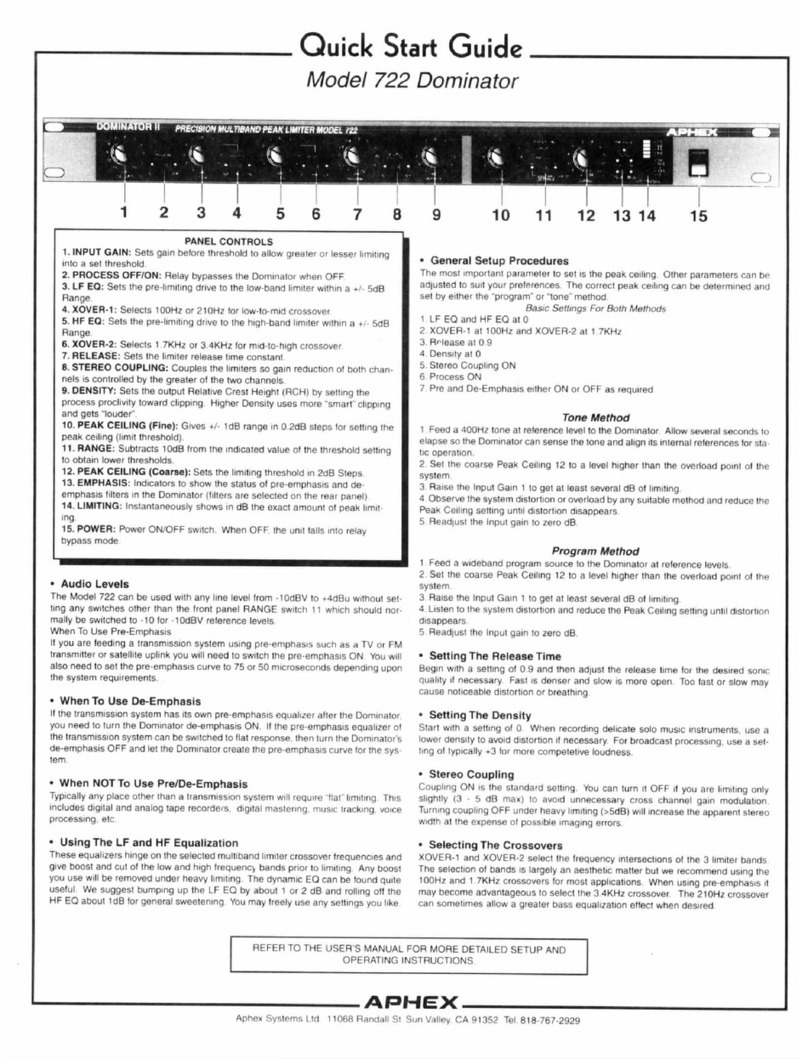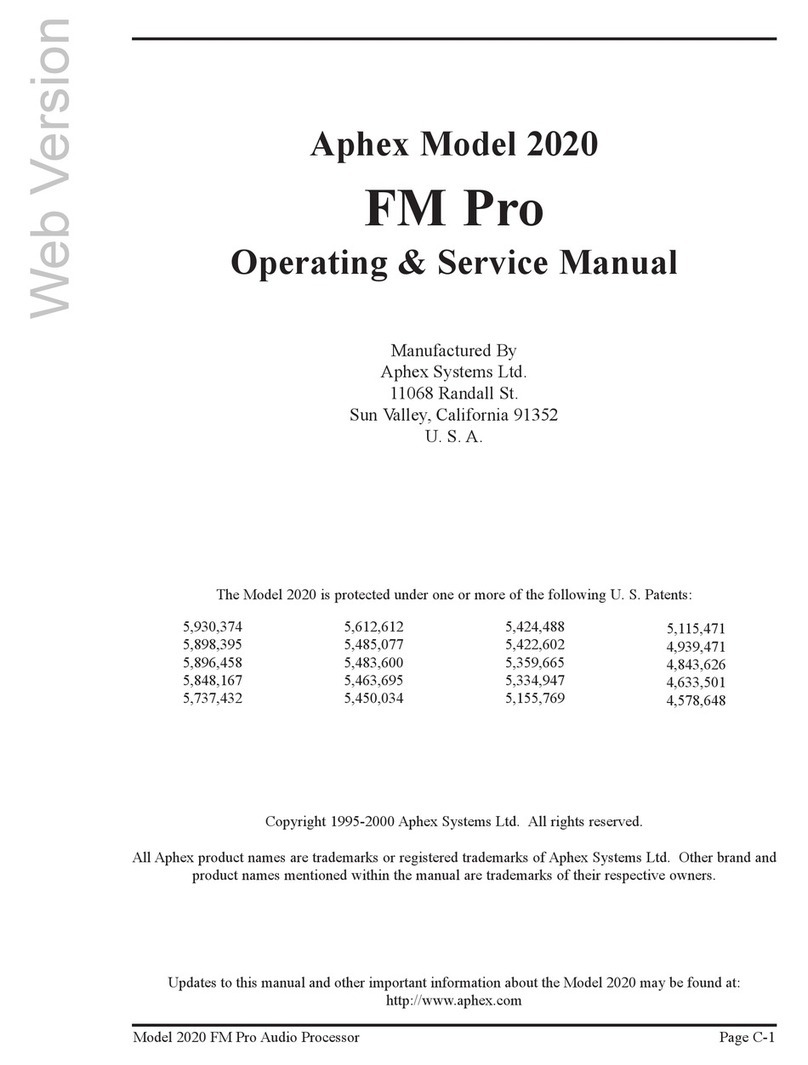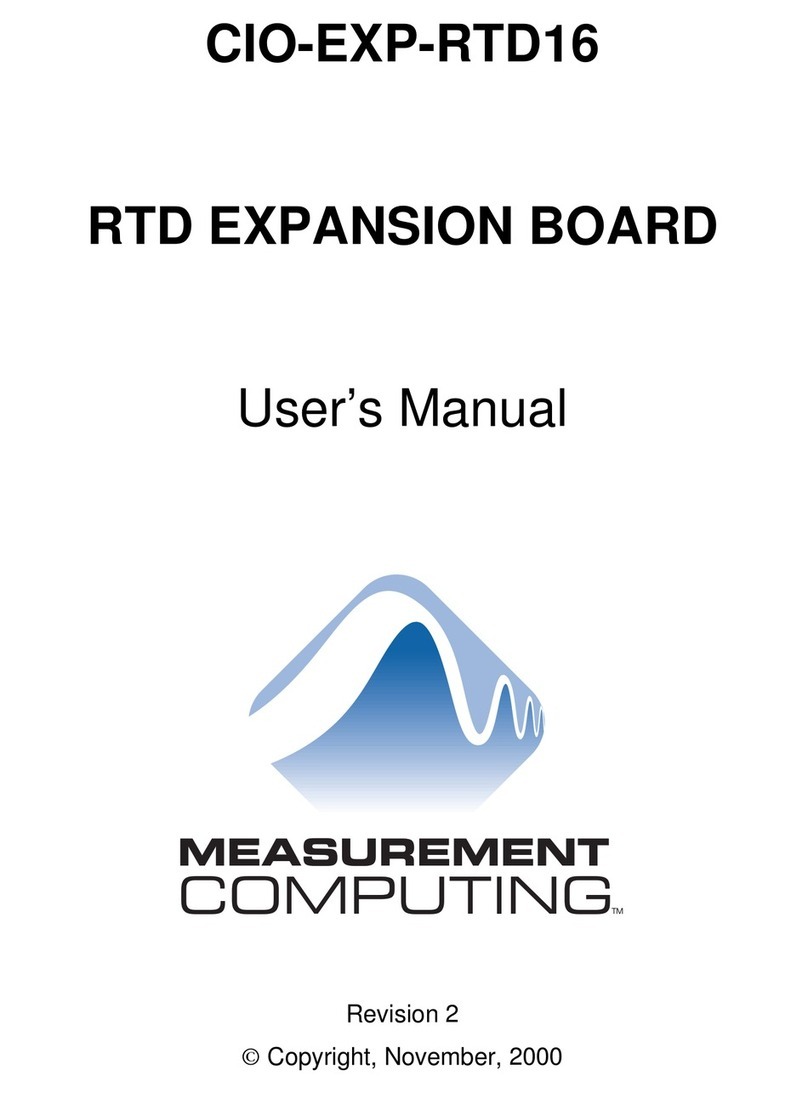
230 instruction Manual
Aphex Systems Ltd. Model 230Page 6
230
master voice channel
Page 7Aphex Systems Ltd. Model 230
HAVING AN EDGE
Talented people aren’t totally perfect. Well, of course,
you are, but let’s face it -- who else really is? Some-
times it takes an edge for even the best talent to grab
a top position in the industry. Other than having a
well connected agent and a pretty good set of pipes,
the Model 230 might just give you the edge you
need.
GETTING BIG
As you probably already know, getting a really sweet
voice track requires more than the right mic or expert
mic technique. A plain recorded voice can sound very
good alone, but not “have it” when put into the mix.
Voice artists are constantly asked for a more compel-
ling, louder track. TV promos, film trailers, even radio
production voices need to be dense, fat, consistent
and loud. The body of the voice needs to be fuller
- somehow bigger than life. If this is your goal, you
need a Model 230.
WORK, DON’T TWEAK
At some point as a professional you want to stop
fooling with the equipment and concentrate on
reading, talking, and expressing. The Model 230 will
help you do that by giving you easy to use voice pro-
cessing that works incredibly well without constant
fidgeting.
ARE YOU GEARED OUT TO THE MAX?
For many voicing pros, getting bigger means gather-
ing up countless compressors, limiters, equalizers and
other audio tools in a quest for that certain “sound”.
Managing all that gear can be overwhelming. It
seldom gets used to its full potential. That’s why you
need the comprehensive, easy to use Model 230. It
combines a whole array of proven voice processing
effects with a super quality mic preamp in an easy
to use package. It even gives you digital audio that’s
ready for your hard disk or recorder.
BOOST YOUR ELOQUENCE
For live on-air talent, preachers, lecturers, or anyone
speaking into a microphone, the Model 230 can
make voices at all times clear, compelling and able to
be heard over a world of background chatter. It may
not bestow upon you any new talent of eloquence,
2.0 “Master Voice Channel” - What?
but it can give a boost to whatever you’ve already
got.
STAYING IN CONTROL
Radio and TV stations frequently need to better
control live originated voice quality. Making news
anchors, drive-time jocks, spot producers, and every-
one else sound more intimate, clear, and regulated is
a big presentation booster.
HANDLING MANY VOICES
When the news team is on the air, or the morning
zoo is hamming it up, all of the voices need to be
balanced and adjusted automatically to make sure
they are heard at a constant level. A Model 230 used
on each microphone will take care of this problem
perfectly. The Logic Assisted Noise Gate will reli-
ably attenuate background noises, crosstalk, and
reverberation when multiple mics are open but not
spoken into.
DE-ESSING, DIGITAL, AND ALL THAT STUFF
There are various channel strips and other processors
with mic preamps on the market. Most contain the
same basic array of effects and controls, but are not
easy to operate effectively. The Model 230 is different.
It contains unique and proprietary effects innovated
by Aphex engineering that are specifically excellent
for maximizing voice quality for both air and produc-
tion. Plus, it was engineered with intuitive controls
that do not have critical settings. You will find it easy
to understand and use.
Exclusive Aphex Features:
• RPA Tube Preamplifier™
• Easyrider™ Compressor
• Logic Assisted Gate™
• Big Bottom®
• Aural Exciter®
• SPR Spectral Phase Rotator™
Custom Engineered Functions:
• Low Distortion Parametric EQ
• Split Band DE-ESSER
• High Resolution A/D Converter






